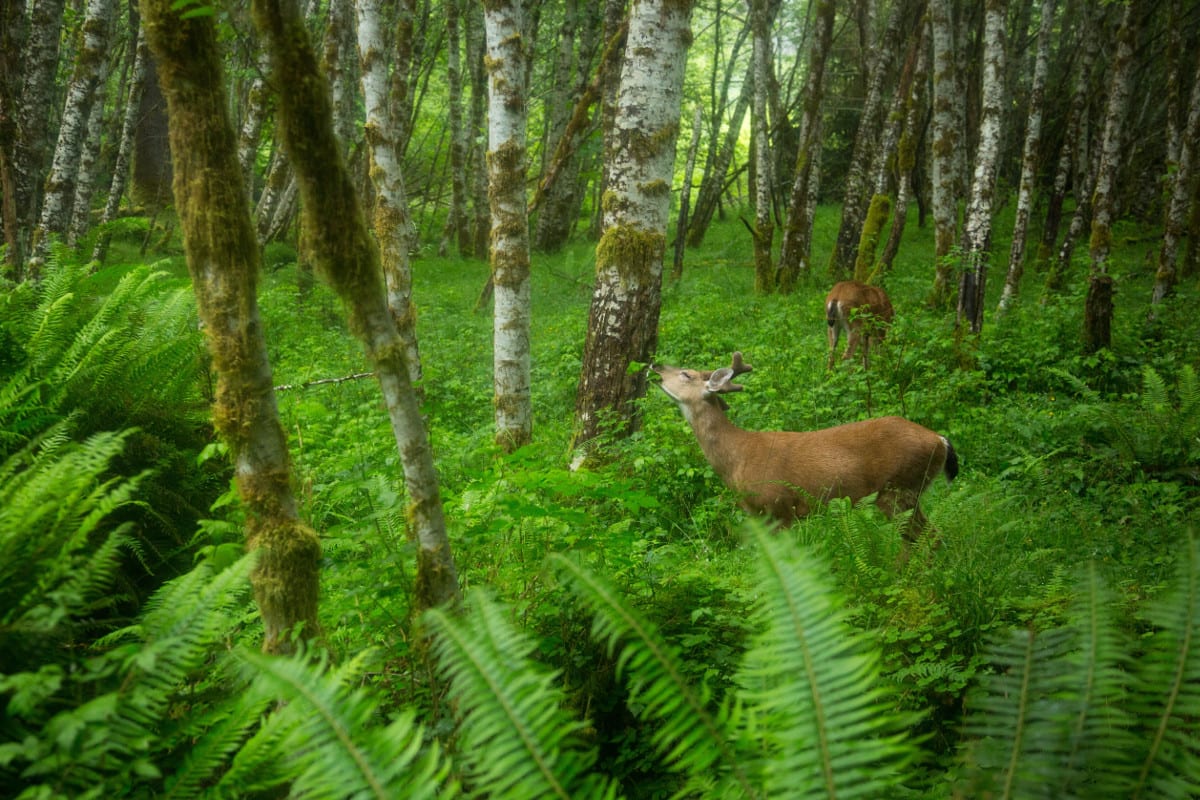New Healthy Watershed Consortium Grant Program First-Year Awards
The new Healthy Watershed Consortium Grant Program’s first-year awards will protect and improve land management on hundreds of thousands of acres of watersheds that provide drinking water and an array of economic and environmental benefits. The nine awards total more than $1.4 million and will benefit organizations and partnerships in seven states. The Heathy Watersheds Consortium Grant Program was conceived by the U.S. Environmental Protection Agency Office of Water (EPA) and launched in late 2015. EPA co-funds the program with the U. S. Endowment for Forestry and Communities (Endowment), which manages the partnership.
“These grants will accelerate protection and improved management of watersheds across the U.S.,” said Carlton Owen, the Endowment’s President and CEO. “Protecting watersheds is the first step in ensuring safe, reliable sources of drinking water. Improving management of these lands will benefit wildlife, help maintain rural economies, and reduce threats to communities from floods and the extreme weather associated with climate change.”
The Healthy Watersheds Consortium Grant Program’s goal is to “accelerate and expand the strategic protection of healthy, freshwater ecosystems and their watersheds.” EPA and the Endowment each provide $625,000 annually for grants, and the program is planned to run for at least six years. In this inaugural year, the program received 169 applications requesting more than $37 million.
“The Healthy Watershed Consortium Grant Program is a unique public-private partnership that brings together businesses, local governments, universities, and not-for-profit organizations to work collaboratively on watershed protection–which is key to long-lasting environmentalprotection,” said Joel Beauvais, deputy assistant administrator for EPA’s Office of Water. “Today’sgrants will protect waterways from pollution while maintaining healthy habitats and ensuringclean and safe drinking water that will safeguard local economies that depend on watersheds.”
Grants focused on three categories: 1) short-term funding to leverage larger financing for targeted watershed protection; 2) funds to help build the capacity of local organizations for sustainable, long-term watershed protection; and 3) new techniques or approaches that advance the state of practice for watershed protection and that can be replicated across the country.
“Strong partnerships are a key theme for this program,” said Owen. “These awards bringtogether businesses, local governments, tribes, universities, and not-for-profit organizations who are working collaboratively to protect watersheds and water. These groups know that the quality of life in their communities depends on the quality and reliability of their water.”
The nine funded proposals are:
Permanently Protecting the Largest Rivers in Eastern Maine-$150,000 to Downeast Salmon Federation to conserve 80 percent of the habitat corridors along the remaining three unprotected rivers in Washington County, Maine, by 2025. Funds will support a full-time director for three years for the Federation’s Downeast Rivers Land Trust.
Healing Waters Regional Landscape Initiative Cacapon River Watershed, West Virginia-
$100,000 to Cacapon and Lost Rivers Land Trust to develop the Healing Waters Regional Landscape Initiative, build capacity for large-scale protection efforts throughout the watershed, and create a strategic local and regional collaboration model.
Myakka Island Conservation Corridor, Florida-$156,000 to Conservation Foundation of the Gulf Coast to conserve more than 10,000 acres over the next six years within the Myakka River watershed, in rapidly-growing Sarasota and Manatee Counties. These properties will link and buffer already protected lands and help keep waterways drinkable, fishable and swimmable.
Colorado Conservation Exchange: Accelerating Investment in Watershed Health-$150,000 to accelerate investment in watershed health to reduce wildfire threats in the Big Thompson and Cache La Poudre watersheds and beyond through a Watershed Investment Fund linking investors with land stewards.
Healthy Watersheds California-$225,000 to Pacific Forest Trust to develop the policies, technical assessments, and financing instruments needed to leverage private and public capital for restoration and conservation of an estimated 7 million acres of watersheds which serve California’s primary reservoirs.
Protecting Forests to Protect Watersheds-$200,000 to The Trust for Public Land and the Save the Redwoods League to work collaboratively to seek California Clean Water State Revolving Fund loans for large-scale protection of forested watersheds.
Protecting Blue Creek & the Klamath River for Salmon, Wildlife and People-$100,000 to Western Rivers Conservancy to implement long-term watershed protection plans, sell carbon offsets, and create new jobs in rural northern California. Partners, including the Yurok Tribe, will protect 47,000 acres within four watersheds in northern California’s temperate rainforest.
Framework for Acquiring and Sustainably Managing Agricultural Land-$200,000 to Freshwater Trust to build a replicable framework to acquire and sustainably manage agricultural land in the John Day Basin, Oregon. The model will address the increasing conversion of farmland to other uses nationally. As farmers retire over the next 20 years, nearly one-half of all U.S. farmland—400 million acres—will change hands. Sustainable management of these farmlands will enhance watershed protection.
Accelerating Watershed Protection in the Central Puget Sound Region-$200,000 to Puget Sound Regional Council, a Metropolitan Planning Organization that includes 86 jurisdictions. Their project will develop a regional open space plan focused on protecting high priority, threatened ecosystems; prepare a watershed protection report that informs the upcoming update of theRegion’s growth plan, VISION 2040, to integrate growth management with ecosystem protection; and promote use of a new online ecosystem service valuation tool for regional watershed benefits, decision making, and local actions.
For more information on the Healthy Watersheds Consortium Grant Program, visit the program webpage.
For more information contact:
Peter Stangel
+1-404-915-2763
peter@runslikeclock.work
The U.S. Endowment for Forestry and Communities (the Endowment) is a not-for-profit public charity working collaboratively with partners in the public and private sectors to advance systemic, transformative and sustainable change for the health and vitality of the nation’s working forests and forest-reliant communities. – www.USEndowment.org


